
Date: July 28, 2021
Location: Lat: 39.982301°, Lon: -69.010605°
Dive depth range: 302 - 1067 meters (992 - 3506 feet)
Access Dive Summary and ROV Data
On Dive 20, the last dive of the 2021 North Atlantic Stepping Stones expedition, while exploring the water column above Hydrographer Canyon, we encountered this helmet jellyfish during our midwater transect at a depth of 700 meters (2,297 feet). Video courtesy of NOAA Ocean Exploration, 2021 North Atlantic Stepping Stones: New England and Corner Rise Seamounts. Download largest version (mp4, 56.5 MB).
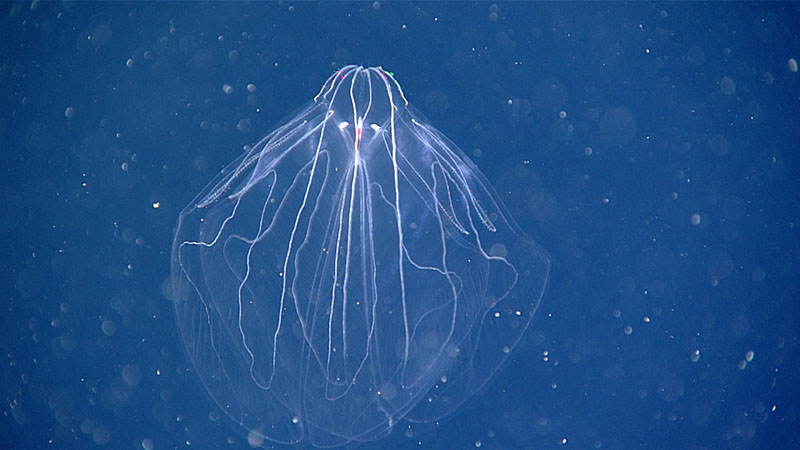
Bathocyroe fosteri ctenophores were the most frequently observed organisms during Dive 20 of the 2021 North Atlantic Stepping Stones expedition. This one was seen during the 630-meter (2,067-foot) transect to explore the water column within Hydrographer Canyon. Image courtesy of NOAA Ocean Exploration, 2021 North Atlantic Stepping Stones: New England and Corner Rise Seamounts. Download largest version (jpg, 1 MB).
The final dive of the 2021 North Atlantic Stepping Stones expedition was dedicated to exploration of the water column within Hydrographer Canyon through two series of transects. The first series involved transects at depths of 300, 500, 700, and 900 meters (984, 1,640, 2,297, and 2,953 feet). The second series started with a transect within the bathypelagic or midnight zone of the ocean at 1,200 meters (3,937 feet) depth and was followed by a transect at a depth of 630 meters (2,067 feet), within the area’s deep scattering layer (DSL). The DSL is a region in the water column where there is such a high density of marine organisms that they generate their own sonar signal.
During the dive, we observed more than 650 individuals throughout the water column, including ctenophores, siphonophores, jellyfish, arrow worms, shrimp, larvaceans, and several different fishes.
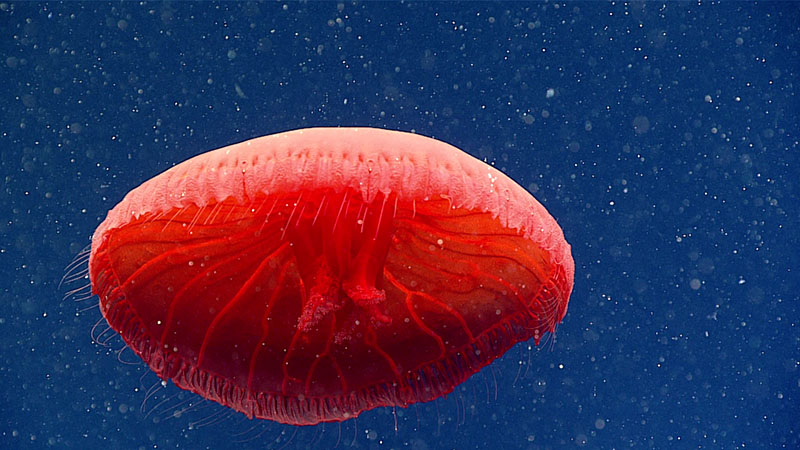
This beautiful red jellyfish in the genus Poralia may be an undescribed species. It was seen during the third transect of Dive 20 of the 2021 North Atlantic Stepping Stones expedition, at a depth of 700 meters (2,297 feet). Image courtesy of NOAA Ocean Exploration, 2021 North Atlantic Stepping Stones: New England and Corner Rise Seamounts. Download largest version (jpg, 1.3 MB).
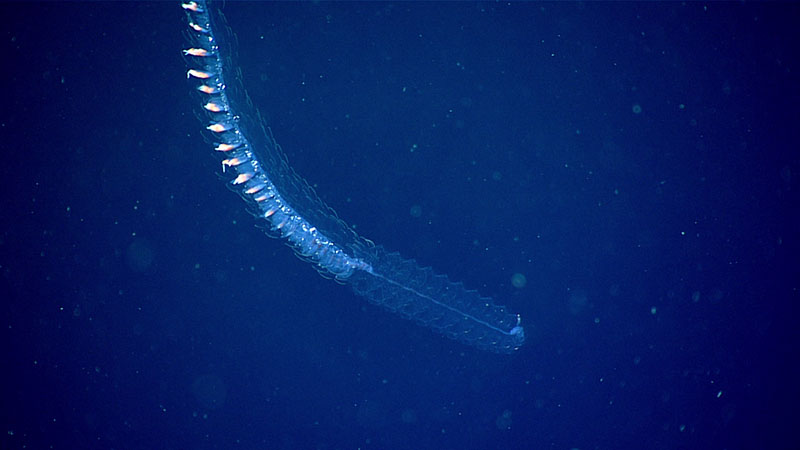
While exploring the water column during the 700-meter (2,297-foot) transect of Dive 20 of the 2021 North Atlantic Stepping Stones expedition, we imaged this physonect siphonophore. Although siphonophores may appear to be single organisms, they are actually colonies of many individual hydrozoans (called zooids), each specialized for different functions such as swimming, feeding, reproduction, and defense. Image courtesy of NOAA Ocean Exploration, 2021 North Atlantic Stepping Stones: New England and Corner Rise Seamounts. Download largest version (jpg, 886 KB).
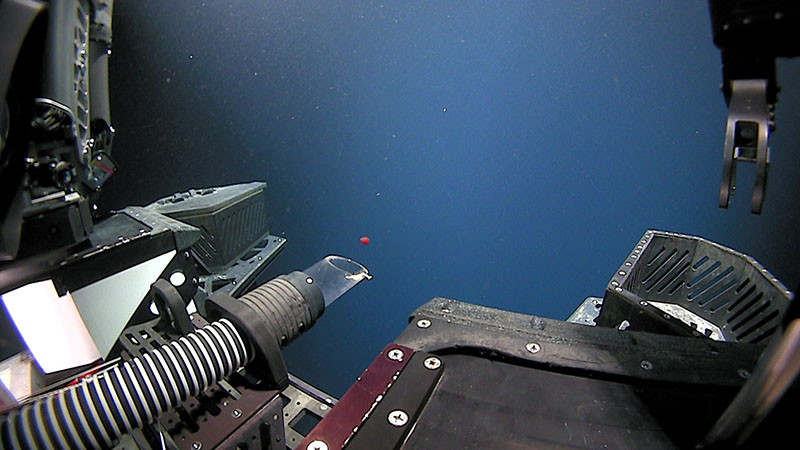
A total of four samples were collected during Dive 20 of the 2021 North Atlantic Stepping Stones expedition using the suction sample on remotely operated vehicle (ROV) Deep Discoverer. Here, Global Foundation for Ocean Exploration ROV pilots deftly maneuver to collect a potential new species of jellyfish during the 1200-meter (3,937-foot) dive transect. Image courtesy of NOAA Ocean Exploration, 2021 North Atlantic Stepping Stones: New England and Corner Rise Seamounts. Download largest version (jpg, 979 KB).
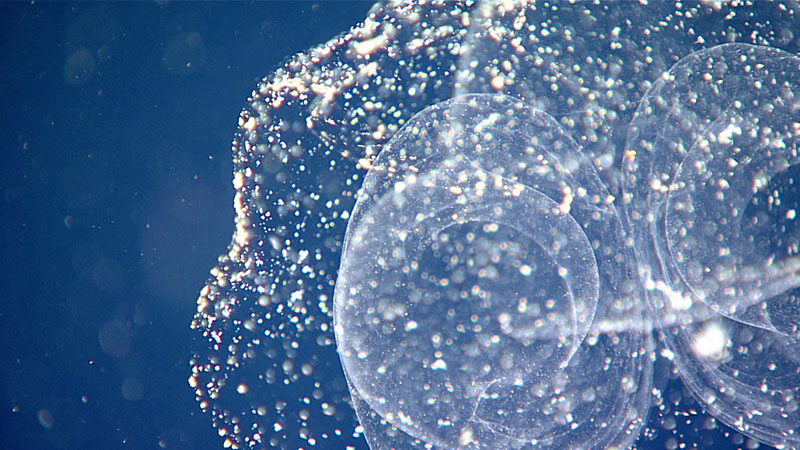
A close look at a larvacean house, seen during the 1200-meter (3,937-foot) water column transect of Dive 20 of the 2021 North Atlantic Stepping Stones expedition. Larvaceans are solitary, free-swimming tunicates that produce a fragile mucus “house” to help filter small particles from the water. A diffuse outer filter catches larger particles that would be too big to fit in the larvacean’s mouth and protects an inner filter, which is used to strain food particles from the water. The larvacean lives nested inside this inner filter and produces a current by beating its tail. This current both keeps the house inflated and moves water through the filter of the house. Image courtesy of NOAA Ocean Exploration, 2021 North Atlantic Stepping Stones: New England and Corner Rise Seamounts. Download largest version (jpg, 1.4 MB).
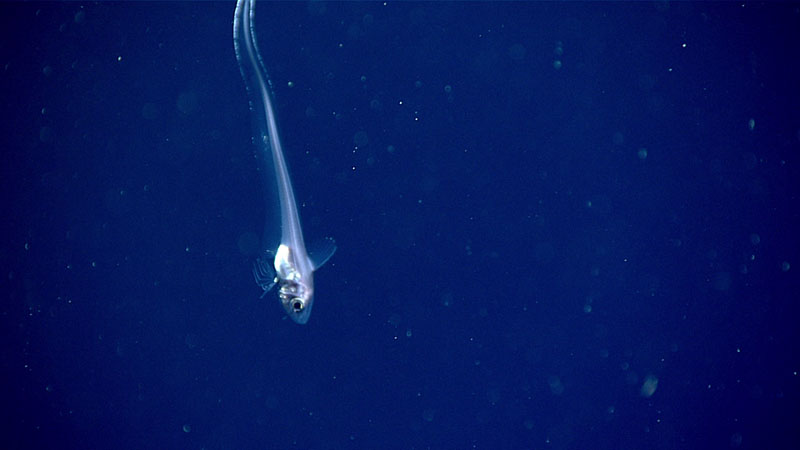
Towards the end of the 700-meter (2,297-foot) water column transect conducted during Dive 20 of the 2021 North Atlantic Stepping Stones expedition, we saw this juvenile rattail fish in the family Macrouridae. Image courtesy of NOAA Ocean Exploration, 2021 North Atlantic Stepping Stones: New England and Corner Rise Seamounts. Download largest version (jpg, 849 KB).
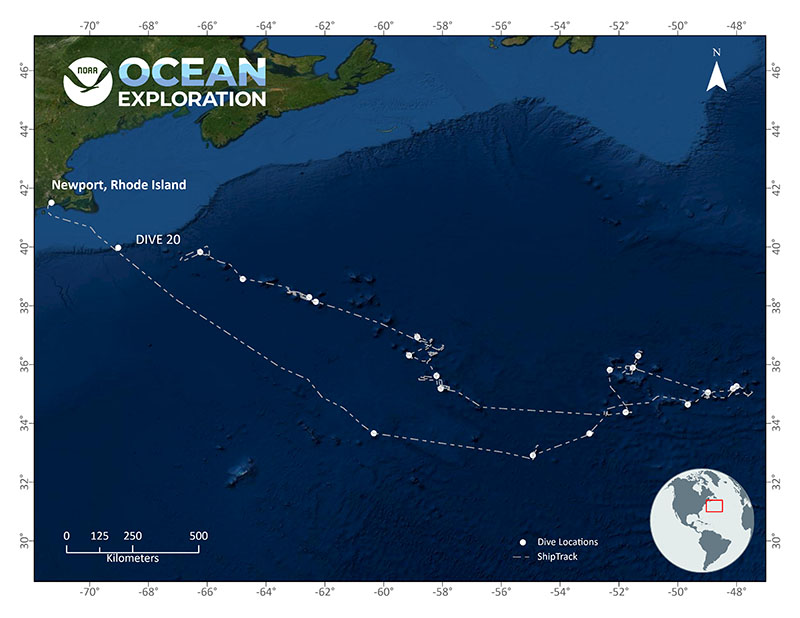
Location of Dive 20 of the 2021 North Atlantic Stepping Stones expedition on July 28, 2021. Map courtesy of NOAA Ocean Exploration, 2021 North Atlantic Stepping Stones: New England and Corner Rise Seamounts. Download largest version (jpg, 3.1 MB).
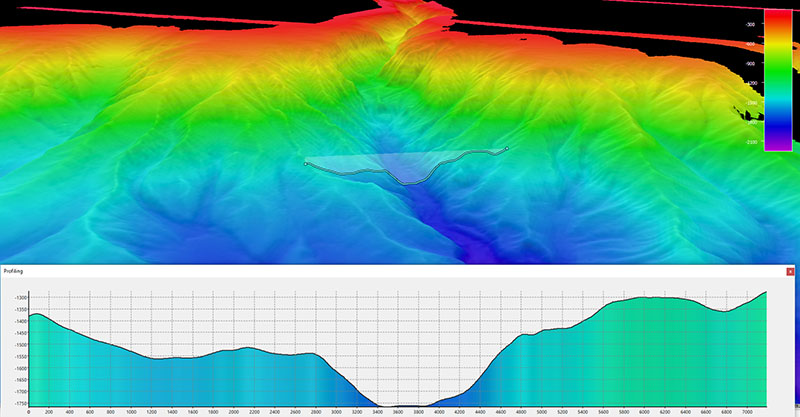
Image showing the dive track of Dive 20 of the 2021 North Atlantic Stepping Stones expedition. Northeast-southwest-oriented profile across the canyon is also shown. Scale is water depth in meters. Image courtesy of NOAA Ocean Exploration, 2021 North Atlantic Stepping Stones: New England and Corner Rise Seamounts. Download largest version (jpg, 939 KB).